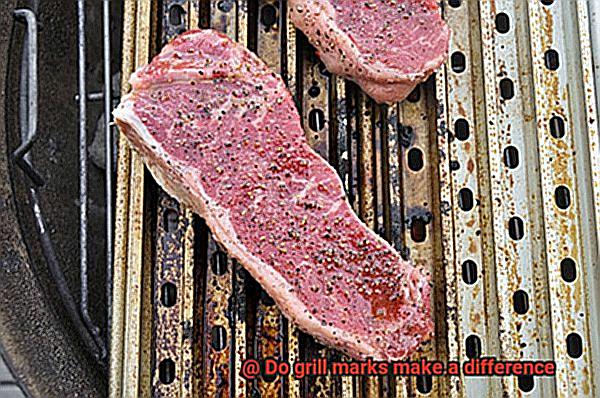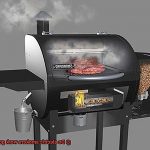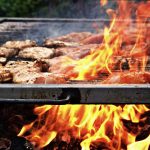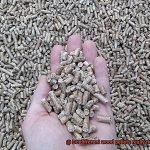Grilling is a beloved pastime that requires skill, patience, and a whole lot of passion. From choosing the right ingredients to mastering the perfect cooking technique, there are countless factors that can make or break your grilling experience. But, one thing that every grill master strives for is the elusive perfect grill marks.
Those tantalizing seared stripes we see on burgers, steaks, and veggies not only look amazing but also add a special charm to all dishes. They create an appetizing visual appeal that can make even the simplest meal look professional and impressive.
But do they really make a difference in taste? The answer is subjective and may depend on individual preferences. However, it’s important to note that grill marks are more about aesthetics than actual flavor.
That being said, there’s no denying that perfectly seared stripes provide a texture variation that can enhance the overall eating experience. They offer a slightly crisp and smoky charred flavor that can take your dish to the next level.
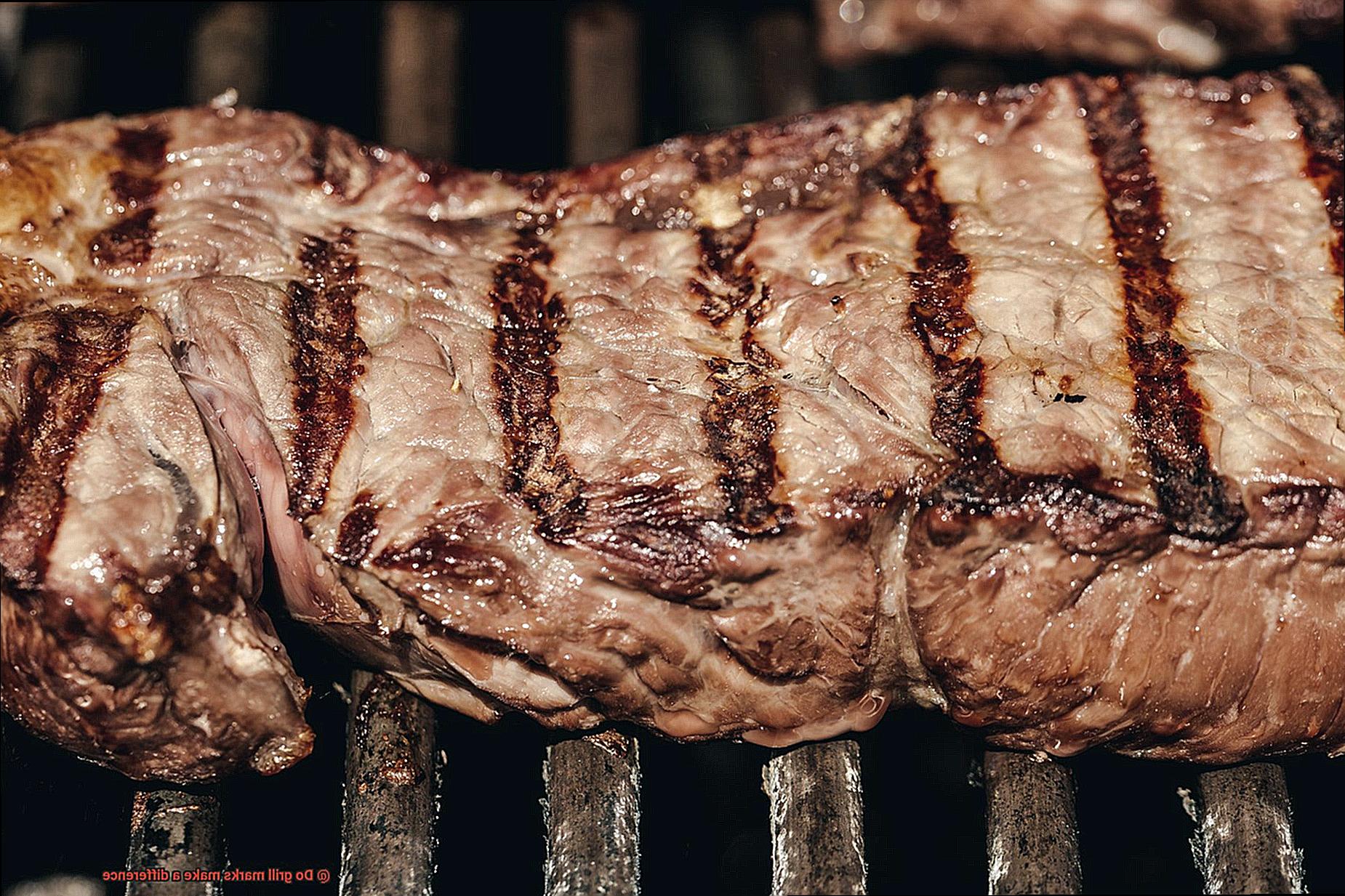
In this blog post, we’ll delve into the science behind grill marks and explore why they have become such an integral part of grilling culture. We’ll discuss the art of searing meats and debate whether grill marks truly matter for taste. Additionally, we’ll provide tips on how to achieve those coveted grill marks so you can impress your friends and family with your grilling skills.
So, let’s fire up those grills and get ready to learn everything there is to know about everyone’s favorite striped sensation – grill marks.
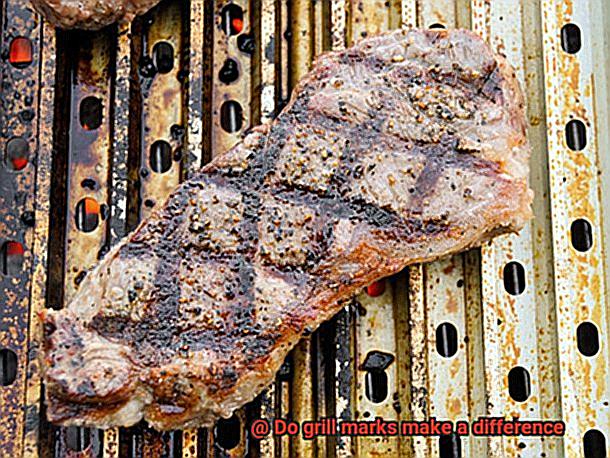
Contents
What Are Grill Marks?
at some point. These charred lines that appear on foods like steak and vegetables add an undeniable visual appeal to grilled dishes. But did you know that grill marks can also impact the texture and flavor of your food?
Grill marks are created by the Maillard reaction, a chemical reaction that occurs when high heat is applied to proteins and sugars in the food. This reaction causes a browning effect, resulting in those signature char lines that we all love. Not only do they make food look like it was professionally cooked, but they can also provide a smoky flavor and crispy texture to the surface of the food.
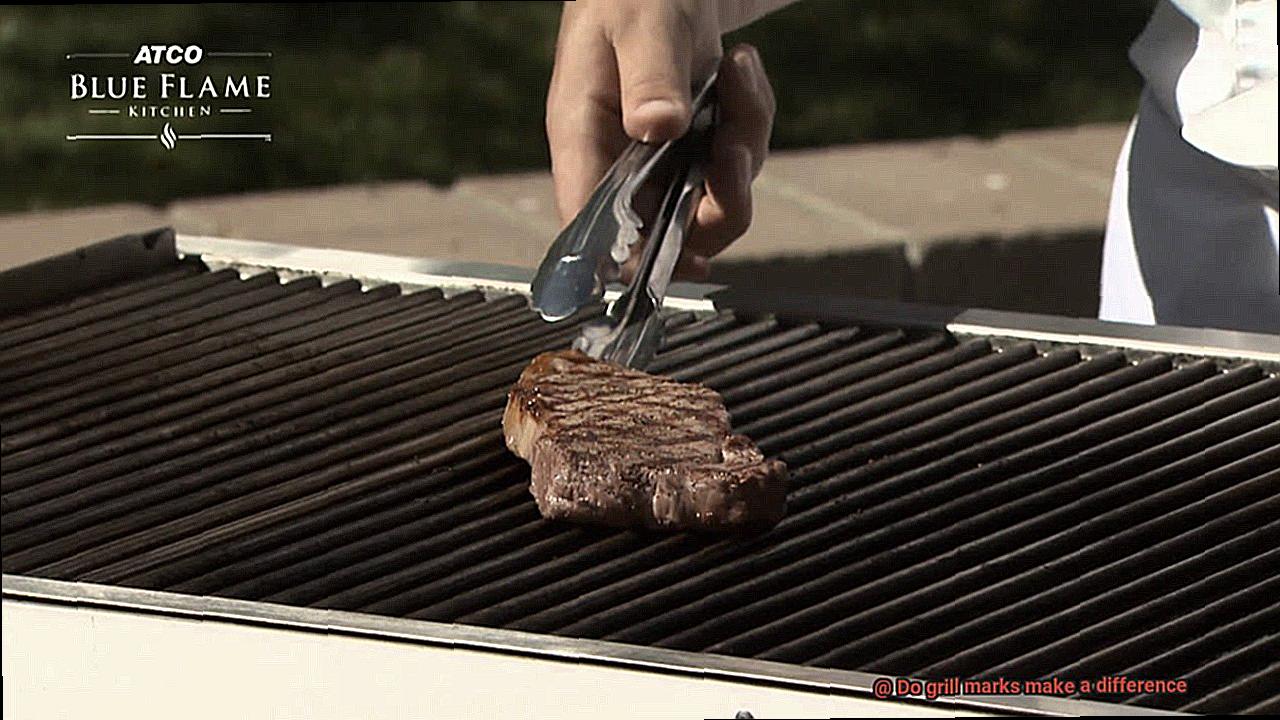
While some people argue that grill marks are just for show and don’t actually make a difference in taste, many chefs and grill enthusiasts believe they’re an important part of the grilling experience. The charred lines on meats like steak can create a flavorful crust and help lock in juices, enhancing both texture and flavor.
It’s important to note that excessive charring and grill marks can detract from the overall quality of the meat, leading to tough and dry meat or even a bitter taste. Achieving the desired internal temperature is still the most crucial factor when grilling.
The Maillard Reaction
The secret behind this culinary magic lies in a chemical reaction known as the Maillard reaction. This process happens when proteins and sugars are exposed to high heat, leading to the browning and flavor development of food, including when it’s grilled.
The Maillard reaction is a fascinating process that occurs in stages. It starts with the breakdown of sugars and the formation of new compounds called melanoidins. These compounds are responsible for the brown color that develops on the surface of grilled foods. But that’s not all; the Maillard reaction also produces a range of flavor compounds, including those that give grilled foods their characteristic smoky, caramelized taste. Some of these compounds are volatile and contribute to the aroma of grilled food, while others are non-volatile and contribute to the depth and complexity of its flavor.
Grill marks are a common sight on grilled foods, and they play a role in the Maillard reaction too. The marks result from the Maillard reaction occurring in a pattern where the food comes into contact with the hot grates of a grill. While grill marks may not necessarily affect taste or texture, they add visual appeal to your food. Moreover, some people associate grill marks with outdoor cooking and may prefer them for that reason alone.
To achieve perfect grill marks, you need to understand how the intensity of the Maillard reaction depends on several factors. Temperature, cooking time, and liquids present during cooking influence the extent of browning and flavor development. For example, preheating your grill to high heat (around 450°F), brushing your food with oil to prevent sticking, and cooking it for a few minutes on each side without moving it too much allows the Maillard reaction to occur in a pattern, creating those beautiful brown lines.
Does Charring Affect the Taste of Meat?
The sizzling sound of juicy meat on the grill is a quintessential part of summer. But let’s talk about the elephant in the room- those darkened bits of grilled meat, also known as charring. As an expert in the field, I am here to tell you everything you need to know about how charring affects the taste of meat and the potential risks involved.
The Maillard reaction, a chemical reaction that occurs when heat causes amino acids and sugars in the meat to react and form new compounds, is responsible for that smoky, caramelized taste we all love on our grilled meats. However, as charring becomes more pronounced, some may find it to be bitter or unpleasant.
So, how much charring is too much? Light charring can add a subtle smokiness that enhances the flavor of meat. However, heavy charring can overpower natural flavors and make your meat taste burnt. Therefore, it’s crucial to be mindful of how much charring occurs if you want a balance of taste and texture.
But it’s not just about taste- charred meat also has potential health implications. Studies have shown that consuming burnt or charred meat may increase the risk of cancer due to the formation of carcinogens such as heterocyclic amines (HCAs) and polycyclic aromatic hydrocarbons (PAHs). These compounds are formed when meat is cooked at high temperatures, especially when it comes into contact with an open flame or smoke.
So what steps can you take to reduce your risk while still enjoying that smoky flavor? Firstly, try to avoid extreme charring on your meats. Secondly, use marinades or rubs that contain acidic ingredients like vinegar, lemon juice or wine as they can help reduce the formation of HCAs. Thirdly, use a lower heat setting when cooking your meat and avoid direct contact with flames.
Grill Marks and Visual Appeal
Let’s start with the basics: grill marks are those beautiful charred lines that appear on food when it’s cooked on a grill. They’re often considered a hallmark of the perfect grilled dish, adding visual appeal and giving the impression that the food has been cooked to perfection. But what about their impact on taste?
Some argue that grill marks add an extra layer of flavor and texture to food. This is because the high heat of the grill causes Maillard reactions to occur, creating a caramelized crust on the surface of the food. Meats like steak or burgers benefit from this crust, contributing a slightly charred flavor that many people find irresistible.
However, not everyone agrees that grill marks make much of a difference in terms of taste and texture. Some experts argue that Maillard reactions happen regardless of whether or not there are grill marks, and what matters most is cooking the food to its proper internal temperature.
So, where do I stand? In my opinion, grill marks do add something special to a dish – but they’re not essential. While they can enhance flavor and texture, it ultimately comes down to personal preference. Some people find them important while others don’t care one way or another.
In terms of appearance, some find that grill marks detract from the overall look of their food, as they can be unevenly spaced or too dark in certain areas. However, when done correctly, grill marks can create an impressive presentation that’s sure to impress your guests.
But remember: while grill marks may look and potentially enhance taste, they should never be your sole indicator of whether or not your dish is fully cooked. Always use a meat thermometer to ensure it reaches a safe internal temperature.
Internal Temperature Matters Most
While those perfect grill marks may be the envy of your neighbors, they’re not the end-all-be-all when it comes to grilling. In fact, the internal temperature of your meat is what truly matters most.
Why is internal temperature so important? Well, it determines whether your meat is safe to eat and how delicious it will be. Different meats require different internal temperatures to be considered safe for consumption. For instance, beef should be cooked to an internal temperature of 145°F for medium rare, while chicken should reach 165°F.
To ensure that your meat is both safe and scrumptious, use a meat thermometer – it’s your culinary ally. While cooking on the grill, periodically check the internal temperature of your meat with a thermometer. This takes the guesswork out of grilling and helps you achieve consistent results every time.
Now, let’s talk about those grill marks. While they may add an appealing visual element to your food, they don’t necessarily indicate that your food is cooked properly or has reached a safe internal temperature. In fact, if you focus too much on creating those perfect grill marks, you may end up with dry and overcooked meat.
In conclusion, don’t get too caught up in the aesthetics of grill marks; instead, prioritize the internal temperature of your meat. Use a meat thermometer to ensure that it’s cooked safely and to your desired level of doneness. Your taste buds (and stomach) will thank you. Remember these key takeaways:
The Right Cooking Equipment
Look no further than the right cooking equipment. As an expert on this topic, I can assure you that having the proper tools and grill is crucial for achieving those sought-after grill marks and unlocking new levels of culinary excellence.
First and foremost, a quality grill with clean grates is the foundation for creating perfect grill marks. Gas grills are a popular choice for their convenience and temperature control, while charcoal grills offer a smokier flavor and the option to use wood chips for added taste. Whichever grill type you choose, ensure it’s in good condition and ready to fire up.
But the grill itself isn’t the only key factor. The right tools can make all the difference in achieving beautifully marked pieces of food. Invest in a sturdy pair of tongs for flipping your food with ease, a wire brush for cleaning the grates, and crucially, a high-quality meat thermometer for ensuring perfectly cooked meat every time.
Another critical aspect to consider is the type of grates on your grill. Cast iron grates are renowned for creating deep and defined grill marks, while stainless steel grates may result in thinner and less pronounced lines. Experiment with different grate types to find the best option for your desired outcome.
Tips for Perfect Grill Marks
Grilling is an art form, and achieving perfect grill marks is the ultimate goal for any grill master. Not only do they make your food look more appetizing, but they also add a layer of flavor and texture that can take your dish to the next level. In this guide, we’ll explore some essential tips for achieving those perfect grill marks every time.
Preheat Your Grill
The key to achieving perfect grill marks is starting with a hot grill. Make sure to preheat your grill for at least 10-15 minutes before adding any food. This will ensure that the grates are hot enough to sear the meat and create those beautiful grill marks.
Clean Your Grates Thoroughly
Clean grates are crucial for preventing sticking and ensuring even cooking. Use a wire brush or scraper to remove any leftover food or debris from previous meals. This will help create a smooth surface for your food to rest on and promote even browning.
Oil Up.
Using a high smoke point oil like vegetable or canola oil, lightly coat the grates with a brush or paper towel before adding any food. This will prevent sticking and promote even browning, resulting in perfect grill marks every time.
High Heat is Essential
High heat is necessary for achieving those signature browned lines on your meat. Aim for a temperature of around 450-500°F to allow the meat to sear quickly and develop those beautiful grill marks.
Don’t Move Your Meat Around Too Much
Once you’ve placed your food on the grill, avoid moving it around too much. This will help create those distinct grill marks that we all love. Let it sit on the grill for a few minutes before flipping or moving it to a different spot.
Diagonal Placement
To achieve those classic criss-cross grill marks, place your food on the grill at a diagonal angle. After a few minutes, rotate the meat 90 degrees and continue cooking until you have crosshatch grill marks. This technique is not only visually appealing, but it also helps to ensure even cooking.
Flip Only Once
Resist the urge to flip your food multiple times. Instead, wait until it’s about halfway cooked before flipping it over once. This will allow the grill marks to form and prevent your food from sticking.
po5mv1NgDNo” >
Conclusion
To sum up, grill marks may not have a direct impact on the flavor of your food, but they certainly do contribute to the texture and visual appeal. The Maillard reaction is responsible for those alluring seared stripes we see on our favorite grilled dishes. It creates a slightly crispy and smoky charred flavor that can take your meal to the next level.
However, it’s important to keep in mind that too much charring or grill marks can actually harm the quality of your meat, leading to tough and dry bites or even an unpleasant bitter taste. In reality, achieving the right internal temperature is still the most crucial factor when grilling.
To achieve those perfect grill marks every time, you’ll need the right equipment – a clean grill with sturdy tongs, a wire brush for cleaning grates, and a high-quality meat thermometer are all essential. Preheating your grill, scrubbing your grates thoroughly, using high heat, and lightly oiling your food before placing it on the grates are also some tips for achieving those coveted grill marks.
In conclusion, while grill marks may not be essential for taste or texture, they undoubtedly contribute to an impressive presentation that’s sure to impress your guests. Remember to prioritize the internal temperature of your meat over aesthetics and use a meat thermometer to ensure it reaches a safe internal temperature.

